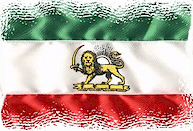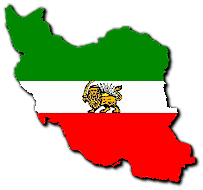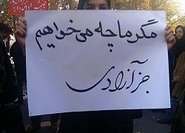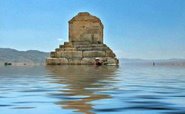called 'Discovery of Atlantis,” about the historical background to the film' 300.'
http://www.payvand.com/news/07/mar/1277.html
NOT WITHSTANDING THAT THIS FILM IS BASED ON AN ADAPTATION OF A COMIC BOOK AND THEREFORE IT CLEARLY DOES NOT REFLECT ANY ACCURATE OR TRUE DEPICTION OF HISTORY IN RESPONSE TO HIS ARTICLE, Here is my thoughts regarding his assertions.
He says that 'The birth of the Persian Empire was concomitant with the birth of the Zoroastrian faith. And then he goes on to say that: In fact there is a direct correlation since the prophet Zoroaster met with, and converted, the first Persian King, Cyrus the Great '
CONTRARY TO WHAT HE HAS WRITTEN, ZOROASTRIANISM DESTROYED PERSIAN CULTURE EMBODIED BY THE LIKES OF CYRUS THE GREAT. THERE ARE NO RECORDS OR PROOFS THAT CYRUS THE GREAT WAS A ZOROASTRIAN. HE MIGHT HAVE ACCEPTED THE TENANTS OF THAT RELIGION JUST LIKE HE RESPECTED ALL OTHER RELIGIONS OF THAT TIME. see : http://www.khomam.com/
He says that, The Persians had eradicated paganism and idolatry from their own midst and had set up a government that firmly believed in, and acted on, the belief in one righteous God.
THIS IS JUST NOT TRUE. THIS IS A MYTH PERPETUATED BY ZOROASTRIANS.
IN FACT PERSIANS NEVER BELIEVED IN IDOL GODS AND DID NOT BELIEVED IN IDOLS. AND AS FAR AS PAGANISM GOES IT DEPENDS WHAT YOU MEAN BY PAGANISM.
When Cyrus became king, he was following on from many other kings that had ruled Persia for 5000 years before him and they where all followers of the Old Persian culture and religion, something akin to Mithraism and the old 'pagan' NATURALISM religions.
In fact in a few paragraph on in this rambling and confused article he says that, 'We know that King Cyrus and his armies entered Babylon in 539 BC and deposed its wicked ruler, Nebuchadnezzar, (an idol worshiper), without using force. Cyrus then did something that was simply unheard of: he freed all the Hebrews (Jews who believed in one God and their prophet Moses had been around for at least 5oo year before Cyrus the Great) who had been enslaved in Babylon, and sent them back to Israel to rebuild their temple.
So you see, at that time the idea of monotheism did exist, and Cyrus the great or the Zoroastrians did not suddenly discover it and promoted it across the world.
ZOROASTRIANISM was around in tandem and in parallel to other religions such as Judaism, Paganism and Mithraism.
The Persians and their kings knew all this but were the followers of Mithraism. They respected all other faiths and acknowledge them by giving the people the freedom of thought and warship.
In fact Cyrus the Great did something that all other Persian kings had done before him, but in a larger and more historically important scale. In a way Mr. Sar-mast contradicts himself by saying that, 'At the time when the Persian kings were spreading monotheism through their vast empire, the Jews were the only other people on earth that believed in one God. The truth is that by defeating the Greeks and their culture based on pure paganism of the Greek type, the Persians had replaced it with Mithraism which lasted until Christianity took over the religious cultures of Greeks, Romans and indeed Persians for 500 years afterwards. ( till the arrival of Jesus of Nazareth )
As Mr. Sar-mast states, Mithraism was indeed taken up and adopted by Rome and its soldiers, and it got diluted with Christianity, and eventually was compromised and infused into Saint Paul's religion, Christianity. To say that this was a revolutionary event would be an understatement. To those who study history, it (Falsely), appears that the Persian Empire boomed almost as soon as it adopted monotheism, and the growth of the empire spread these new and revolutionary ideas far and wide,(as far as Greece), whose people were busy worshipping statues of Zeus, Apollo, Athena and a host of whimsical pagan gods.
IN FACT THE CORRECT INTERPRETATION IS TO ACKNOWLEDGE THAT THE GREEK SOCIETY AND ITS RELIGIONS WAS ALREADY INFUSED WITH MITHRAISM AND WAS CHANGING FROM WITHIN.
As he says, 'Imagine a time when every village or tribe you travelled to had a different deity. Hundreds, maybe thousands of different gods!
I DO.
I BELIEVE THAT EVERYONE WAS AND IS A GOD.
IN ANCIENT PERSIA EVERYONE BELIEVED THAT THEY HAD BEEN BORN OUT OF THE CREATOR'S SEED THAT GOD HAD IMPLANTED IN HUMANS AND THEREFOR EVERY HUMAN HAD A PART OF GAD IN HIM .
THEREFORE MAN WAS PART OF ALL OTHER CREATION ( AND BY ASSOCIATION), HUMANS AND GOD HIMSELF WERE PART AND PARCEL OF EACH OTHER ( LITERALLY).
ALL THE HUMANITY AND NATURE WAS CONNECTED AND BORN OF THE SAME SEED. THE SAME GOD/CREATION HAD CREATED THE WORLD AND LEFT A SEED OF HIMSELF IN EVERYTHING IN THAT WORLD.
THIS MAKES A LOT MORE SENSE TO ME .
MUCH MORE THAN WHAT IS SAID ABOUT MAN AND HIS RELATIONSHIP WITH GOD BY THE ONE GOD THEORY.
I DO NOT ACCEPT THE SEPARATION OF HUMANS FROM GOD AND DO NOT BELIVE IN MONOTHEISM AND WHAT MOSES, IBRAHIM, JESUS AND MOHAMMAD TOLD US ABOUT GOD AND THAT 'THERE IS ONLY ONE GOD.'
I ALSO DO NOT ACCEPT THE REPLACEMENT OF MAN/GOD WITH ORDINARY HELPLESS MAN IN NEED OF SALVATION BY THE OTHER, THE GOD / CREATOR UP THERE SOMEWHERE IN HEAVENS.
AS A MAN/GOD WHO IS CARRYING THE SEED OF CREATION, AND GOD HIMSELF INSIDE ME, I FEEL MUCH MORE CLOSER TO THE OLD PERSIAN CULTURE AND RELIGION THAN ALL THE NONSENSE ABOUT MONOTHEISM.
If you really want to know about Persians watch these films.
Pleas also read the following article from Pro. Farrokh.
http://www.ghandchi.com/iranscope/Anthology/KavehFarrokh/300/index.htm
Kaveh Farrokh
From Wikipedia, the free encyclopedia
Jump to: navigation, search
Dr. Kaveh Farrokh
Kaveh Farrokh (born September 24, 1962, Athens) is an expert in the field of Iranian history.
Contents[hide]
1 Life and Education
2 Works
3 Articles
4 Books
5 References
//
[edit] Life and Education
Kaveh Farrokh was born in Athens, Greece, and is of Ossetian and Azeri descent. From an early age he exhibited a keen aptitude and interest in history. His talents were first recognized in 1980, during his senior year at the Institut Chateaubriand in Cannes, France, where he was granted the Lenoardo Da Vinci prize for high achievement in history from the mayor. Dr. Farrokh went on to obtain his undergraduate arts degree in May 1985 and his Ph.D. on September 24, 2001 from the University of British Columbia, where he specialized on the cognitive and linguistic processes of Persian speakers. He married Mahnaz Momeni in 2002 and currently resides in Vancouver, Canada.
As a result of his life experience, education, and studies of linguistics, Dr. Farrokh now speaks English, German, French, and Persian. He also has a working understanding of at least three living languages, Provençal, Italian, Dutch, and Kurmanji Kurdish, as well as two ancient languages, Latin and Pahlavi. He has also lived in and traveled to several countries, including West Germany, East Germany, France, England, Belgium, Italy, Russia, and Iran.
[edit] Works
Dr. Farrokh has been writing since the early 1990's and has contributed articles to internationally recognized academic journals such as the International Journal of the Sociology of Language and chapters for books such as the International Book of Dyslexia: A Cross-Language Comparison and Practice Guide (Wiley, 2004).[1]
He has lectured at the University of British Columbia's Persian Legacy series and has provided seminars at Stanford University's WAIS (World Association of International Studies) conference.[2] He is now a member of WAIS. The History Channel has also interviewed and filmed Dr. Farrokh on the topic of technology in ancient Persia (due to appear in October 2006). He also serves as a member of the Persian Gulf Preservation Society.[3]
[edit] Articles
The Alexander Movie: How are Iranians and Greeks Portrayed?
Iranian Now-Ruz (New Year), Nissanu, and the 365 day Year
Pan-Arabism’s Legacy of Confrontation with Iran
British Arabism and the Bombings in Iran (Written for Asia Times, co-Authored with Mahan Abedin)
Pan-Turanianism Takes Aim at Azerbaijan: A Geopolitical Agenda
Interestingly, Dr. Farrokh was to have the above article published as a comprehensive textbook, however decided to forego print publication and post the entire text (along with 300 rare photos) for free on the internet.
Parthian is not Turkish
[edit] Books
Elite Sassanian Cavalry: 226-651 AD[4]: Dr. Farrokhs first book, which is the first to specifically discuss the Sassanian dyanasty's elite cavalry (Savaran). This text has outlined the specific Pahlavi terms of the Sassanian cavalry’s elite units (e.g. Gyanavaspar Peshmerga; Zhayedan, etc.), military tactics, insignia and pitched battles. The role of Iranian women in the Sassanian military system has also been emphasized. He also provided a presentation of his aforementioned book at Stanford University.[5]
At present, Dr. Farrokh has completed a new book for Osprey Publishing Press entitled Shadows in the Desert: Persia at War. The text will outline Persia’s contributions to world civilization in areas such as mythology, technology, sciences, literature, militaria, the arts, music, architecture and garments. Kaveh’s main aim is to promote the establishment of a permanent Iranian Studies department in Canadian and American universities.
[edit] References
^ Farrokh, K. (2004). Dyslexia in Persian. In I. Smythe, J. Everatt, & R. Salter, (Ed.s), International Book of Dyslexia: A Cross Language Comparison and Practice Guide (pp. 73-79). John Wiley & Sons Ltd.
^ WAIS
^ Persian Gulf Member gathering in Tehran, Iran
^ Farrokh, K. (2005). Elite Sassanian Cavalry: 226-651 AD. England: Osprey Elite Series 110, Osprey Publishing.
^ Events at Stanford




















No comments:
Post a Comment